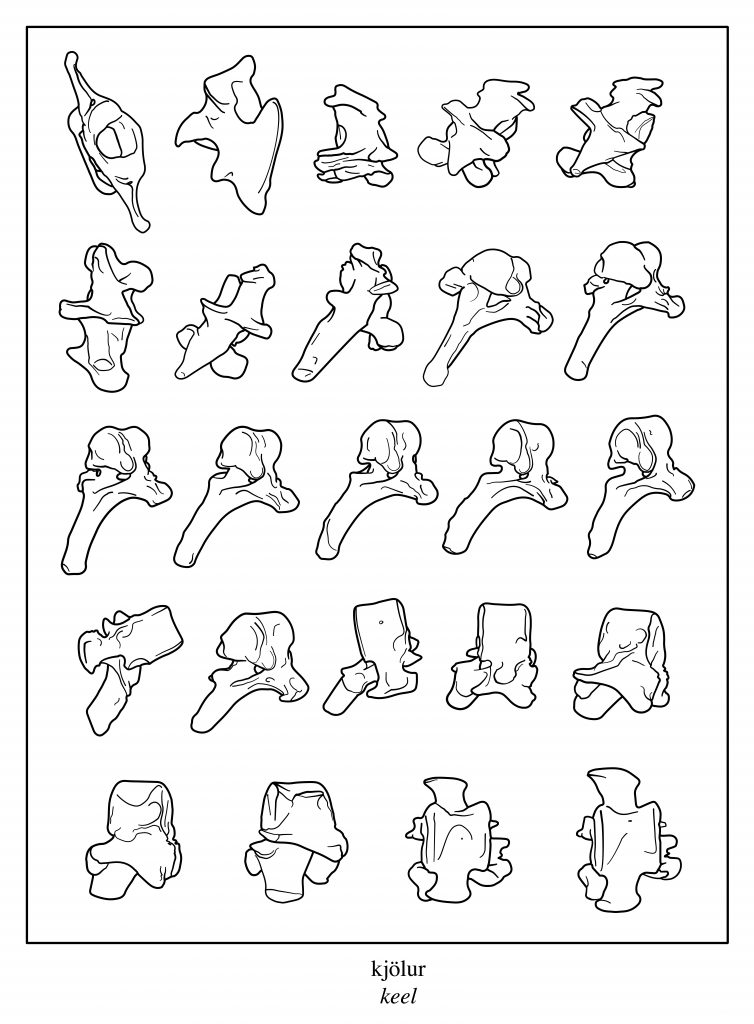Final symposium hosted by the Reykjavík Art Museum October 22, 2022
The symposium Visitations: Art, Agency and Belonging marked the project’s final event. Hosted by the Reykjavík Art Museum, the programme featured two internationally renonwned guest artists, Mark Dion (US) and Terike Haapoja (FI/US), in addition to the project leaders and artists Bryndís Snæbjörnsdóttir & Mark Wilson, co-researcher and curator Æsa Sigurjónsdótti and co-researcher and folklorist Kristinn Schram, both from the University of Iceland. An opening address was given by Hulda Stefánsdóttir, dean of academic development at Iceland University of the Arts. Further to their individual contributions, the four artists participated in a dynamic panel discussion reflecting on art’s capacity to cross borders into other fields, such as academia, science, museums, entertainment and media, thereby having impact beyond the art world. Chaired by the museum’s chief curator, Markús Þór Andrésson, the panel also discussed art’s ability to accommodate pluratlity in research through its distinct ways of generating and displaying knowledge.
Conference recording can be watched here on Vimeo.

Exhibition opening at Anchorage Museum October 7, 2022
Visitations: From Greenland to Iceland to Alaska in Borderless Arctic Seas is now on view at the Anchorage Museum in Alaska, one of our collaborators. In line with the project’s overall objectives, the exhibition focuses on the effects climate change, population displacement and environmental disruption have had on polar bear encounters in Iceland. The art work is presented through a variety of media, including video, photographs, collage, drawings, zoological remains, and glass sculptures of polar bear dens in miniature scale. The exhibition is the last one to open as part of the Visitation project and will run until September 3, 2023.

VISITATIONS wins the Icelandic Art Prize 2022

The Icelandic Art Prize is awarded each year by the Icelandic Visual Arts Council to outstanding visual artists.
The selection committee about Snæbjörnsdóttir/Wilson’s work: “The exhibition is the result of the multi-year research project Polar Bears Out of Place, which they undertook in collaboration with experts in folklore, natural and environmental studies. The aim of the project is to contribute to a growing body of knowledge concerning human/non-human relations in a time of global warming. To this end, particular focus is on polar bear arrivals in Iceland both past and present.
Their career is multiform and they have used the research methods of contemporary art to enter a dialogue with research in other fields, such as natural science, ethnology and environmental studies. According to them, contemporary art methods can bring an important addition to the dialogue between different fields and bring new and unexpected points into view.
Snæbjörnsdóttir/Wilson use diverse methods to present their work, where interaction of video works, found objects, drawings, photos and various data shapes the installation in each exhibition. Their installation at Akureyri Art Museum was powerful and enlightening and formed an interesting whole in the museum space. The project Polar Bears Out of Place was awarded a three-year grant from Rannís’ Research Fund (2019-2021) and is the first visual art research project to receive this grant. The project is housed within Iceland University of the Arts.”
VISITATIONS exhibition opening at Akureyri Art Museum September 25 2021

The exhibition presents new art work by Snæbjörnsdóttir/Wilson as output of the three-year research project. As such, it is the first of its kind in the Icelandic context. The project as a whole has unequivocal value for the development of research culture in the arts in Iceland and marks a turning point for the University of the Arts. As an interdisciplinary collaboration between Iceland University of the Arts and the University of Iceland, the project also introduces an innovative approach to research collaboration in times that call for a revision of conventional methodologies and a new approach to knowledge production. The exhibition marks one of the most important events in the project as it presents an artistic approach to the research subject, where a space is created for critical reflection and imagination on polar bear arrivals to Iceland.
Media coverage on the exhibition and related events:
Víðsjá 12.10.
Víðsjá 19.09.
Menningin RÚV 22.09.
N4 sjónvarpsviðtal 24.09.
Lestarklefinn 24.09.
The Arctic Circle Assembly in Reykjavík, October 10-12 2019

The research team participated in a panel session at the Arctic Circle Assembly, the largest network of international dialogue and cooperation on the future of the Arctic. The team conducted a well-attended session of about 70 guests, under the title “Visitations: Polar Bears Out of Place”. The session presented the Visitations research project in a critical context of concepts such as ‘stranger’, hospitality’, and ‘cohabitation’. From the early stages of the research plan, the conference was to be an important platform for the team to present its subjects, exchange views and share expertise with peers, both from within the field and outside, as well as across national and cultural borders. Session participants were Aaron Leggett, Bryndís Snæbjörnsdóttir, Craig Perham, Kristinn Schram and Mark Wilson, with Julie Decker as chair.
First peer-review meeting


As part of our research design, a peer-review meeting is organised once every year throughout the duration of the project. The aim of these meetings is to bring together the research team with international experts, whose role is to support the project through critical dialogue and advice with respect to individual specialisms.
The first peer-review meeting was held at the Iceland University of the Arts in October 2019 with the participation of Aaron Leggett, curator at Anchorage Museum in Alaska, and Craig Perham, wildlife biologist at the U.S. Bureau of Ocean Energy Management, also based in Alaska. The meeting generated fruitful discussions and exchange on the different geo-political and cultural perceptions of polar bears in Iceland and Alaska respectively. The meeting created a solid basis for further collaboration and intercultural dialogue on the research subject.
